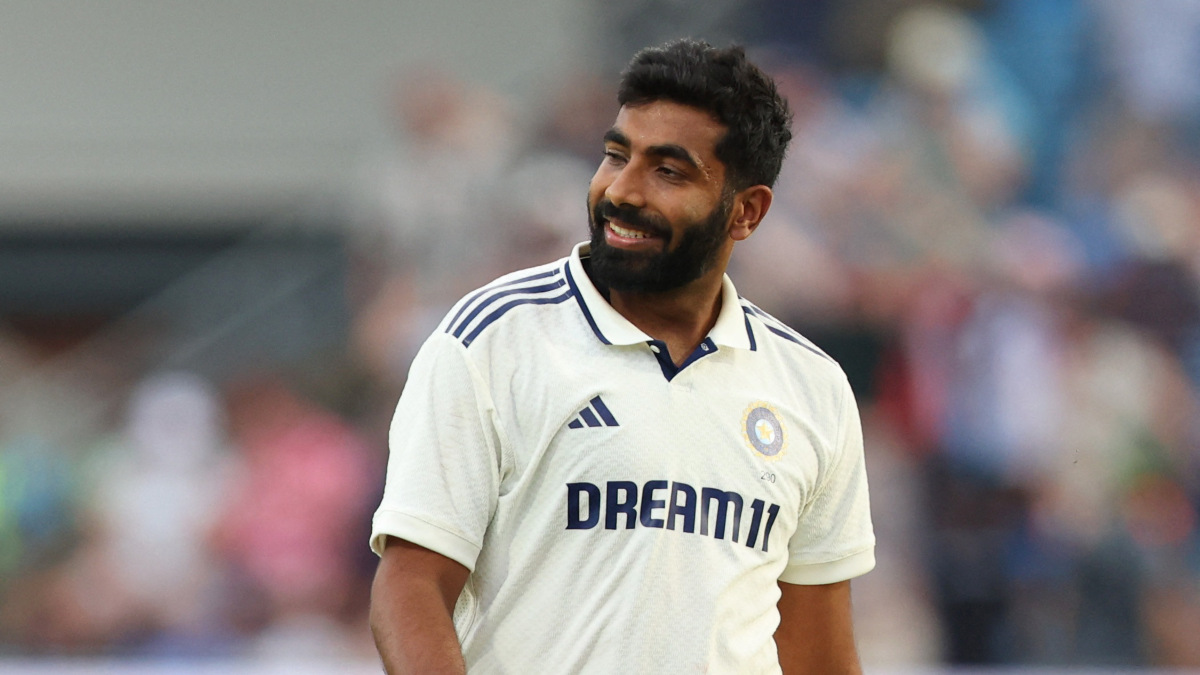) |
|
The first Test match between India and England at Headingley has sparked intense discussion and scrutiny, particularly regarding the performance of the Indian bowling attack. While Jasprit Bumrah delivered a stellar performance, claiming all three English wickets on Day 2, the lack of support from the other pacers, namely Mohammed Siraj and Prasidh Krishna, has drawn significant criticism. This disparity in performance raises questions about the overall effectiveness and depth of the Indian pace bowling unit, especially in challenging conditions. The article highlights the stark contrast between Bumrah's world-class ability and the struggles of his teammates, impacting India's chances of maintaining control in the Test match. The English batsmen capitalized on the inconsistent bowling, with Ollie Pope's unbeaten century solidifying their strong response to India's first innings total. This situation underscores the importance of a cohesive and reliable bowling attack in Test cricket, where sustained pressure and consistent wicket-taking are crucial for success. The social media reactions quoted in the article further amplify the concerns about the supporting bowlers' performances, adding another layer to the narrative surrounding the match. The overall analysis suggests that India needs to address the inconsistencies within their bowling lineup to compete effectively throughout the series.
Jasprit Bumrah's performance in the Headingley Test showcased his exceptional skill and importance to the Indian cricket team. He consistently troubled the English batsmen, demonstrating control, accuracy, and the ability to extract movement from the pitch. His three wickets were crucial in preventing England from completely running away with the game, but the lack of support from the other end ultimately undermined his efforts. Mohammed Siraj, despite showing glimpses of promise, proved expensive in his initial spell, failing to maintain sustained pressure on the batsmen. Prasidh Krishna, in particular, struggled to make an impact, leaking runs and failing to create wicket-taking opportunities. This inconsistency allowed the English batsmen to build partnerships and gain momentum, shifting the balance of the game in their favor. The comparison between Bumrah's performance and that of his fellow bowlers highlights the gap in experience and skill levels within the Indian pace attack. It also raises questions about the selection strategy, particularly the decision to include Shardul Thakur as a bowling all-rounder, given his limited contribution with both bat and ball. The article underscores the need for India to identify and address the weaknesses in their bowling lineup to ensure greater consistency and effectiveness in future matches.
The strong response from the English batsmen, led by Ollie Pope's magnificent century, further exposed the vulnerabilities in the Indian bowling attack. Pope's innings was characterized by skillful strokeplay, solid defense, and the ability to capitalize on loose deliveries. He formed crucial partnerships with other batsmen, building a substantial lead for England and putting them in a commanding position in the Test match. The English batsmen's success can be attributed, in part, to the lack of consistent pressure from the Indian bowlers, apart from Bumrah. They were able to score freely, rotating the strike and maintaining a healthy run rate. This allowed them to dictate the tempo of the game and put the Indian bowlers on the defensive. The article suggests that India needs to devise a more effective strategy to contain the English batsmen and create more wicket-taking opportunities. This may involve changes in bowling plans, field placements, and overall tactics. The ability to adapt to different conditions and opponent's strengths is crucial for success in Test cricket, and India needs to demonstrate greater flexibility and adaptability in their approach.
The social media reactions quoted in the article provide a valuable insight into the public's perception of the Indian bowling attack. The overwhelming sentiment is one of praise for Jasprit Bumrah and disappointment with the performances of the other bowlers. Many fans expressed frustration with Mohammed Siraj's inconsistency, Prasidh Krishna's ineffectiveness, and Shardul Thakur's limited contribution. The comments reflect a general expectation that the Indian pace attack should be able to perform consistently at a high level, particularly given the talent and resources available to the team. The social media reactions also highlight the importance of public opinion in shaping the narrative surrounding the team's performance. Players are often judged based on their performances, and the comments can influence their confidence and motivation. It is important for the team management to be aware of the public's perception and to address any concerns or criticisms in a constructive manner. The article underscores the interconnectedness between the team's performance, public opinion, and media coverage.
In conclusion, the article paints a nuanced picture of the Indian bowling performance in the Headingley Test. While Jasprit Bumrah's brilliance stood out, the lack of support from the other bowlers allowed England to gain the upper hand. The English batsmen capitalized on the inconsistent bowling, with Ollie Pope's century solidifying their strong response. The social media reactions further amplify the concerns about the supporting bowlers' performances, adding another layer to the narrative surrounding the match. The overall analysis suggests that India needs to address the inconsistencies within their bowling lineup to compete effectively throughout the series. This may involve changes in selection strategy, bowling plans, and overall tactics. The ability to adapt to different conditions and opponent's strengths is crucial for success in Test cricket, and India needs to demonstrate greater flexibility and adaptability in their approach. The team management must also be mindful of public opinion and address any concerns or criticisms in a constructive manner. By addressing these issues, India can improve their chances of competing effectively throughout the series and achieving their goals.
